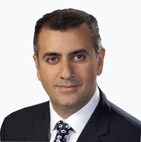A key part of our investment process is to invest in highly profitable companies that are benefitting from global megatrends. One of the key long terms trends is the ageing demographics and a major beneficiary of this trend is the global healthcare sector.
According to Deloitte, a leading management consultant, the number one issue facing the global healthcare system is the ageing population and rise of chronic disease (heart disease, stroke, cancer, chronic respiratory diseases, diabetes, and mental illness, among others) which are, by far, the leading cause of mortality in the world, representing 63% of all deaths, and can be attributed to the aging population, more sedentary lifestyles, diet changes and rising obesity levels, as well as improved diagnostics.
Acceleration in drug approvals
New drugs are being approved at record rates and review times for new drugs that are saving lives are the shortest they have even been. In 2014, the FDA approved 50 new drugs in 2014 composed of 30 new molecular entities and 20 new biologicals. This is one of the highest numbers of approvals in 20 years. This is providing a significant tailwind for the pharmaceutical sector, where the pipeline of drugs is generating a strong tailwind for the sector, which could yield multi billion dollars in revenues.
A recent example of the potential for these new breakthrough drugs is in the treatment of Hepatitis C, where a cure has been found. Gilead Sciences has developed drugs that are leading the way for all-oral treatments in the fast-growing hepatitis C market. Their 2 key drugs in Hepatitis C each generated revenues over $2 billion within 3 months of launch and its first HCV drug generated sales of over $10bn after the first 12 months. With the HCV disease affecting an estimated 3.2 million people in the U.S. and 150-180 million worldwide, it is a disease which can lead to a number of serious liver complications and death.
Valuation
Whilst there are some excellent healthcare companies based in Australia, they tend to be either single or narrow product device companies, which can be at higher risk from product recalls, or companies principally exposed to the Australian healthcare sector, such as radiology, pathology and hospital based companies where there are risks from changing funding structures and regulation. In addition, many of the Australian based healthcare companies tend to trade at a P/E (price/earnings ratio) premium to the global peer group.
The chart below provides a valuation comparison of some of the higher growth Australian based healthcare companies compared to some well positioned international healthcare companies which are leaders in their respective areas of expertise.

Source: Bloomberg Estimates
Conclusion
Investing in global megatrends and sectors that benefit from it, such as the international healthcare sector, provides Australian investors an opportunity to diversify their domestic portfolio into areas which are not available in the domestic Australian share market. Examples include oncology, diabetes and orthopedics. Leaders in these therapeutic areas are trading at attractive valuations.
(Editor’s Note: One way to invest in global healthcare is through the iShares Global Healthcare ETF, ASX Code: IXJ.)
Monik Kotecha is the chief investment officer of Insync Funds Management
Important: This content has been prepared without taking account of the objectives, financial situation or needs of any particular individual. It does not constitute formal advice. Consider the appropriateness of the information in regards to your circumstances.

